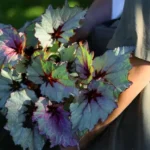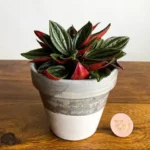Understanding Seasonal Watering Needs
Just like us, houseplants respond to seasonal changes. Light levels, temperature, and humidity shift from one season to the next, and those changes directly influence how much water your indoor plants need. Understanding these patterns allows plant lovers to maintain vibrant, healthy greenery all year round.
Watering your houseplants isn’t a set-it-and-forget-it routine. Instead, it’s a fluid process (pun intended!) that requires you to observe your plant’s cues and the environment. Let’s break down how to adjust your watering routines based on each season, whether you’re nurturing a lush Monstera or a tidy Pilea.
Spring: Waking Up from Dormancy
As daylight hours increase and temperatures rise in spring, your houseplants begin to “wake up” from their winter dormancy. This is a time of revival and new growth, and many plants enter a more active growing phase.
How to Adjust Watering
- Increase watering frequency gradually: As the plant’s growth picks up, you’ll likely notice the soil drying out more quickly between waterings. Begin checking soil moisture more often.
- Watch for signs of growth: New leaves, longer stems, and brighter green hues are signs your plant is ready for more hydration.
- Match water with energy needs: More photosynthesis means more water use. Just make sure there’s proper drainage to prevent overwatering.
Pro Tip:
Repotting is commonly done in spring. If you’re repotting a plant, water it lightly the day before and again lightly after transferring—it’ll reduce transplant shock.
Summer: Peak Growing Season
In summer, most houseplants thrive with extra warmth and light, especially in temperate and tropical climates. But this active season can also put stress on your plants if water needs aren’t met properly.
How to Adjust Watering
- Increase watering frequency: Higher temperatures and faster evaporation mean plants may need water more often—sometimes twice a week depending on the plant and pot size.
- Check soil daily for thirsty plants: Especially smaller pots or those with thinner foliage like ferns and calatheas. Stick a finger about an inch into the soil; if it feels dry, it’s time to water.
- Avoid watering during the hottest part of the day: Morning is best, as it allows time for the plant to absorb water before intense midday sun.
- Watch for signs of underwatering: Wilting, dry edges on leaves, or “curling in” of leaves can be symptoms of needing more frequent hydration.
Humidity Matters
In many homes, summer indoor air can still be dry due to air conditioning. Consider using a pebble tray or humidifier to keep humidity-loving plants happy, particularly species like prayer plants, orchids, and alocasias.
Autumn: Slowing Down
As the days become shorter and temperatures drop, plants begin to slow their growth. This change doesn’t mean your plants are in trouble—it’s a natural part of the year’s cycle. But it’s time to readjust your care routines accordingly.
How to Adjust Watering
- Reduce watering frequency gradually: Since growth slows, the plant needs less hydration. Begin spacing out waterings and monitor how long soil stays wet.
- Watch for mold or fungus gnats: Soil that stays overly moist in cooler weather is an invitation for pests and root rot. Letting soil dry more thoroughly helps prevent this.
- Use a moisture meter or finger test: If the top 1–2 inches of soil are still damp, wait before watering again.
Smart Tip:
Plants like succulents, snake plants, and ZZ plants naturally go into deeper dormancy during cooler months. They might only need water every 3–4 weeks starting late fall.
Winter: Dormant but Not Dead
In winter, most houseplants go dormant or semi-dormant. The limited light, cooler temperatures, and drier indoor air slow down growth significantly. This is the most crucial time to adjust watering, as accidental overwatering during winter is one of the most common ways to harm houseplants.
How to Adjust Watering
- Cut back significantly: Many plants only need watering every 2–4 weeks, depending on species and environment.
- Prioritize soil dryness: Always test before watering. If soil is even slightly moist, wait a few more days.
- Be cautious with tropical plants: These may still need water more often if they’re near heat vents or under grow lights, which can dry them out faster.
Dealing with Dry Indoor Air
Heaters can drastically dry the air inside your home. Some methods to help your plants adapt without overwatering include:
- Group plants together: This increases local humidity levels.
- Use a room humidifier: Beneficial especially for ferns, Calatheas, and other moisture-lovers.
- Add trays of water near radiators: As the water evaporates, humidity rises gently.
Tools to Help You Adjust
Learning to adjust your watering routine can feel a bit overwhelming at first, but there are several tools and techniques that can help you make sense of it all.
- Moisture meters: These can provide a quick insight into how wet the soil is below the surface, which is especially helpful with larger pots.
- Soil types: Plants in fast-draining mixes (like cacti and succulents) dry out faster than those in moisture-retentive soil. Tailor your watering based on soil profile too.
- Pot material: Terra cotta pots wick away moisture more quickly than plastic or ceramic. A plant in terra cotta will need more frequent watering during growing season.
Conclusion: Listen to Your Plants
Adapting your watering routine seasonally is all about observation, intuition, and understanding your plant’s needs. There’s no universal watering schedule that works all year round—your snake plant won’t drink the same way in January as it does in July. Be flexible, pay close attention to changes in growth and environment, and use tools that give you better feedback.
Think of seasonal watering as a conversation: your plants communicate their needs through signs like leaf color, soil moisture, and overall turgor. When you respond accordingly, you’ll experience fewer issues like root rot, pest outbreaks, or leaf drop.
Whether you’re tending to a windowsill full of succulents, a pothos crawling across your bookshelves, or a towering fiddle leaf fig, remember—successful watering isn’t about a calendar, it’s about connection.
References
- Brickell, C., & Joyce, D. (2020). The American Horticultural Society Encyclopedia of Plants and Flowers. DK Publishing.
- Steinkopf, L. (2019). Houseplants: The Complete Guide to Choosing, Growing, and Caring for Indoor Plants. Cool Springs Press.
- RHS Gardening. (2023). Houseplant watering tips. Royal Horticultural Society. https://www.rhs.org.uk/plants/types/houseplants/watering








